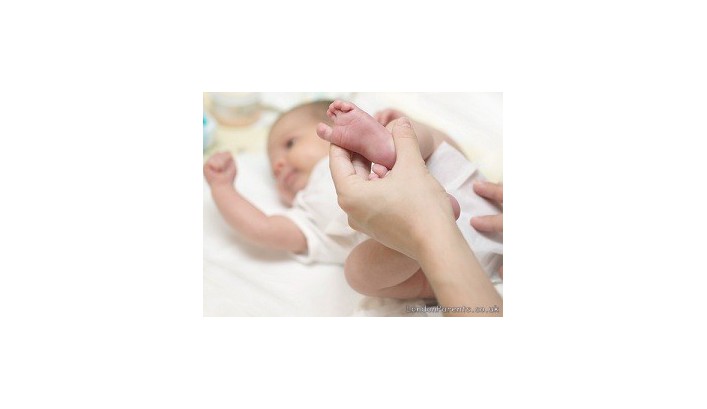Article Categories
News
-
20 July
-
04 November
-
10 July
-
12 June
-
05 June
-
24 September
-
19 September
-
10 May
-
26 April
Website Categories
 Up to one third of all babies suffer from nappy rash at some point in their nappy wearing days. This irritating rash can be unpleasant for babies and cause the skin to become red and sore, so how best can it be treated?
Up to one third of all babies suffer from nappy rash at some point in their nappy wearing days. This irritating rash can be unpleasant for babies and cause the skin to become red and sore, so how best can it be treated?Nappy rash is a form of rash that occurs on a baby’s bottom, or around the area of their nappy. It’s pink or red in colour and the rash usually consists of a series of small spots or blotches. It’s irritating and uncomfortable for babies, especially as they have their nappy changed, so they may be irritated or cry more than normal.
Although nappy rash is normally a mild condition, in some cases it can become more severe, spreading down the legs or onto the stomach and causing dry, cracked and broken skin, swollen areas and blisters. This can be a sign that the rash has become infected, so always see a GP for advice if you’re concerned about the look of nappy rash.
What Causes Nappy Rash?
Nappy rash normally occurs as a result of the skin coming into direct contact with either urine or poo. The ammonia in both urine and poo can cause a skin reaction if they come into contact with the delicate skin of your baby’s bottom. This usually either occurs because a nappy is unable to absorb everything, if a nappy unexpectedly leaks or if a dirty nappy is left on for too long.
Nappy rash can also be triggered by a fungal infection called candida. The fungus thrives in warm, dark and damp places and a damp nappy is the perfect growth centre. The candida fungus irritates the skin in a similar way to ammonia, causing the red, blotchy skin rash. In some cases, nappy rash starts due to ammonia and is made worse by the subsequent development of a fungal infection.
In some cases, nappy rash can also be linked to underlying skin conditions, such as eczema, allergic dermatitis or psoriasis.
Some people believe that nappy rash is more of a common occurrence in babies wearing disposable nappies. However, infants wearing fabric, re-usable nappies aren’t completely immune to getting nappy rash.
How to Treat Nappy Rash
Although the rash looks nasty and it’s stressful to see your baby suffering, the mild form of nappy rash is a common skin complaint in babies and is easily treatable. In most cases, mild nappy rash can successfully be treated at home with the help of readily available remedies, but if you have any concerns or worries, see your GP for advice.
Nappy rash can be treated in the following ways:
- Apply a barrier cream during nappy changes.
Barrier creams such as petroleum jelly or zinc oxide creams should be applied to your baby’s bottom after each nappy change. They work by helping to prevent direct contact between your baby’s skin and the nappy. Barrier creams are readily available at chemists or pharmacies.
- Change nappies regularly.
It goes without saying that one of the best ways of treating and preventing nappy rash is to change nappies regularly throughout the day. When your baby is suffering from a bout of nappy rash, it can be beneficial to change them more regularly for a while until the rash disappears.
- Spend time with the nappy off.
Where feasible, try and some spend time with the nappy off, to let the skin be exposed to the air, rather than a nappy. Just remember to ensure you have some other absorbent item, such as a towel, handy in case of accidents!
- Use only water, not soap.
At bath time, or when changing nappies, stick to only using clean water, not soap, to clean your baby. Some soaps can naturally be irritating to a baby’s sensitive skin, plus they can irritate skin already inflamed with nappy rash.
- Consider changing nappy types or brands
If you suspect an under-absorbent nappy may be to blame for recurring nappy rash, then consider changing to a more absorbent brand. This might involve a bit of a trial and error, but sometimes paying more for a reliable brand can work at better for your baby than constantly using a cheaper nappy. If the rash calms down and you’re using barrier creams, then you may be able to switch back to the cheaper nappy after a while. You could also experiment with alternating use between disposable and reusable fabric nappies.
In the case of severe nappy rash, always see your GP for treatment advice, as a specialist prescribed cream or treatment regime may be required.
Related articles
- Odyssey will open its first UK campus in Marylebone, London, April 2025 - - The award-winning global preschool for children 0-5 ...
Read moreEPIC GLOBAL PRESCHOOL, ODYSSEY, COMING T...
Londonnews554XXXAn award-winning preschool offering from Asia is to open its first campus in London, bringing a new global ‘limitless learning’...
Read moreParenting is no easy task, and for Jordan and Briana Driskell, raising their quintuplets—Zoey, Dakota, Hollyn, Asher, and Gavin&mdash...
Read more0 comments
No messages yet




